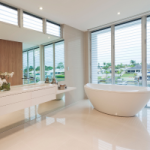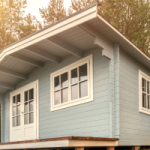We have had a few accountants get in touch with us about this lately and we have a theory.
That pesky virus stopped people from travelling and we all know the unanticipated consequence was huge interest in property – that discretionary spending money had to go somewhere.
So people were renovating properties and building granny flats – more about them later.
Claiming depreciation on renovations is easy when the clients have all the costs and you may not need to get us involved, but what if in the course of those renovations there are eligible Capital Works that get disposed of? That’s like tossing money into a skip bin – and in some cases it can be a lot of money.
If a client comes to you this tax season and tells you they did a renovation recently on a rental property, dig a little deeper. Or better still, make an enquiry and we’ll have a chat with the client and report back on what we find out.
You’ll be very popular if you find a tax deduction they have never heard of.
That’s the sort of service we give your clients.
Key Points
- Your clients may be able to claim on the disposal of Capital Works where there is residual value left in existing Capital Works prior to a renovation.
- Brand new granny flats often have a building contract with a total cost, so we don’t have to inspect the property and we can reduce our fee.
- Older properties with a renovation plus a granny flat may require two depreciation schedules.
- A number of LGAs are making short term rental properties a less attractive investment which may mean you will need to rework their depreciation claims.
 What Capital Works have residual value in them that can be claimed?
What Capital Works have residual value in them that can be claimed?
You would be surprised.
Just this week we had a client come to us after completing a renovation on a late 90s built apartment. It was a typical reno: new kitchen, new bathroom, paint and floors. People usually spend around $40K doing this sort of project.
They knew that there was some depreciation left in the original building shell and they knew there was depreciation to claim in the renovation – their accountant told them that.
But what about the old kitchen and bathroom? Nobody mentioned that, so it’s lucky they were referred to us because we spotted the opportunity.
The client had rented out this property for a few years, did the reno during Covid, and put it back on the rental market. That’s important.
That late 90s kitchen and bathroom still had around 25 years of depreciation left in it. Luckily, the client had some ‘before’ and ‘after’ photos and a plan, so we were able to estimate what they could claim on those Capital Works that were disposed of.
Our estimated residual value of those Capital Works was a bit over $7,000. Not huge, but a nice surprise for the client, and they were pleased their accountant sent them to us.
Earlier this year, we had a client who had been renting out a house for ten years and decided to do a knockdown and rebuild – duplex project. He now has two rental streams for that address and lots of depreciation to claim.
But importantly, that 1992 house he knocked down had another 10 years left to claim on the Capital Works. It was a modest, but large, house and we estimated the original build cost to have been around $97,000.
What was the residual value of the Capital Works that went into that skip?
$24,250.
And they had no idea. Just as well we have plenty of ideas.
 What is the best way to deal with granny flats?
What is the best way to deal with granny flats?
We’ve been getting more enquiries this tax season with granny flats in the mix.
One scenario is a client with an existing, and usually older, rental property on a decent block of land has decided to make that land more productive than it was growing tomatoes, so they put a granny flat there.
These are the easy jobs. The typical investment for a new granny flat is $120-150K and often, there is a building contract with the total cost and plenty of information on the Assets. We usually don’t need to inspect these properties, so your clients benefit from a reduced fee and a turnaround time of a couple of days if required.
Then there are the more complicated scenarios when a client has purchased a property with an old house, that has invariably been renovated, and a newish granny flat in the backyard.
We tend to do two Depreciation Schedules with these jobs – the second at a significant discount. We’ll do one for the house to capture the renovations, and a separate one for the granny flat.
Why? Well, if we put everything on the one property and the client decides to move into the house or knock down the old house, you’ll have to untangle it. And good luck with that. Accountants find a separate Depreciation Schedule for each property makes their job easier. And that’s what we like to do.
 The Airbnb squeeze…
The Airbnb squeeze…
No, we don’t mean when you find that the Airbnb property you booked for your boisterous friends is a lot smaller than it looked in the listing.
We mean the increasing moves from some LGAs (Local Government Areas) to reduce the number of ‘unhosted’ short term rental properties. These are ones where the host does not live at the property. We covered this briefly in a previous edition.
You might have heard the very recent news that Byron Bay in northern NSW will, from the 23rd of September next year, limit the number of days an unhosted property can be rented out for short stays to 60 days per year. The aim is to make more properties available to long term tenants.
And for those clients who say, ‘Pffttt. It will never be enforced. Who is going to count the days?’ The answer is: the neighbours. They would hate living next to a party house and will probably have a calendar on the fridge where they mark off the nights the property is occupied. Airbnb may also be made to share the data, just as they share host income data with the ATO.
You might have some clients rethinking their involvement with the short term rental market and unwinding things. That will mean getting rid of furniture and reworking depreciation claims.
Enquire now for a property-specific assessment
Has this article reminded you about a client’s investment property?
Make a no-obligation enquiry and rely on our 20-plus years of experience in estimating depreciation returns.





